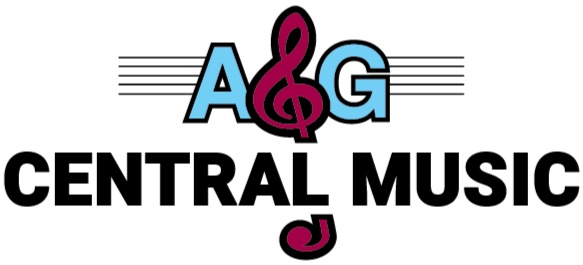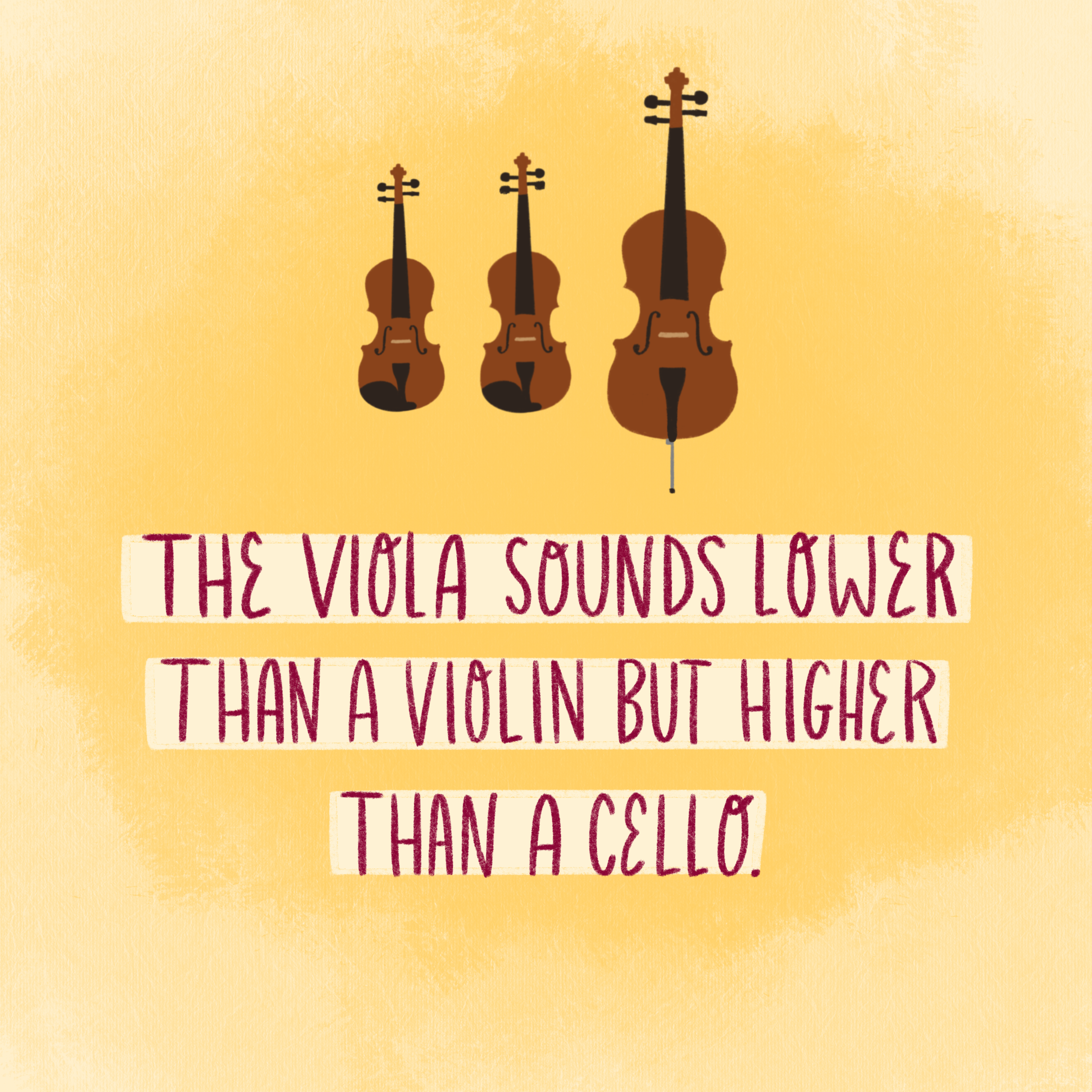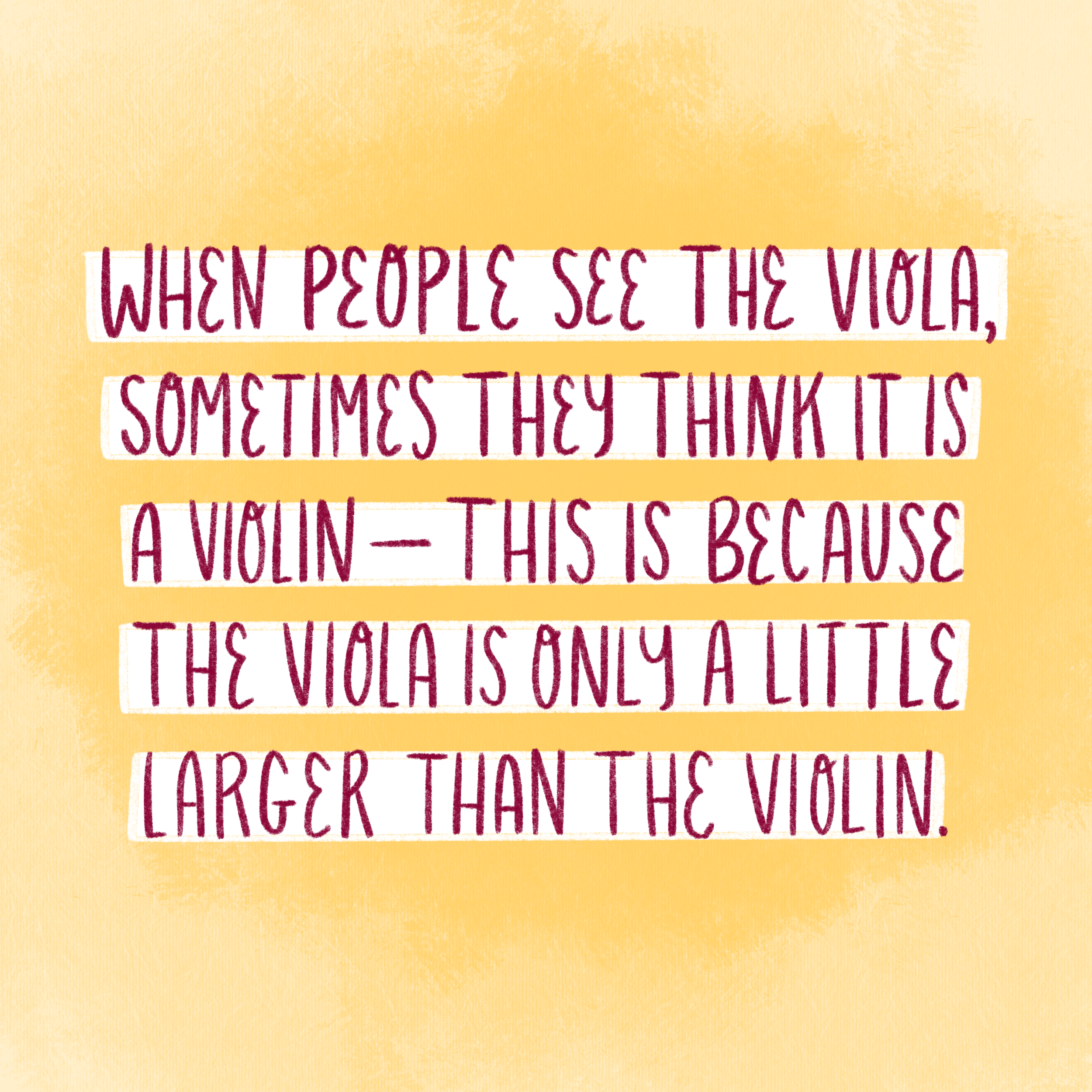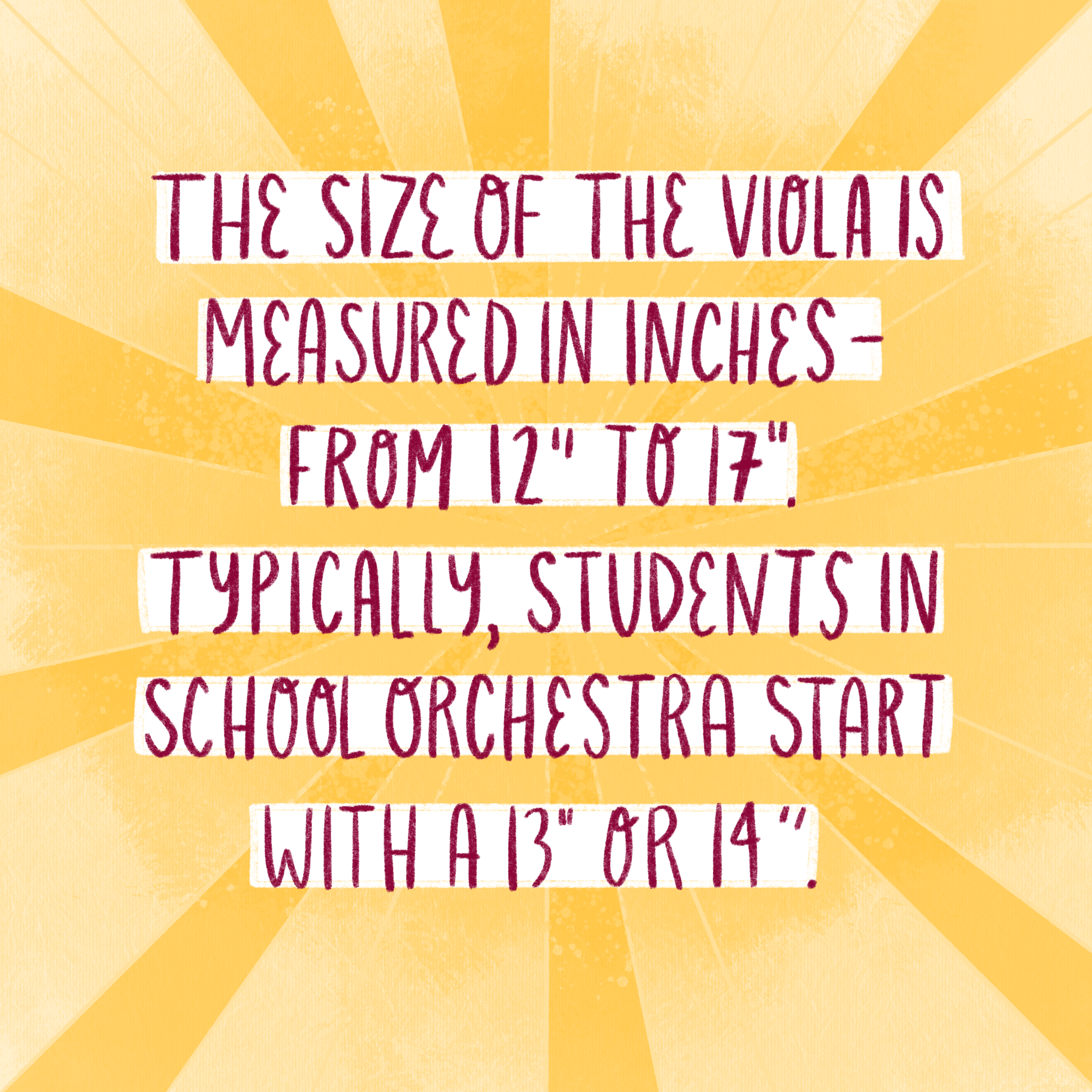The Viola
The modern viola appeared around 500 years ago. The development of the viola came from the need to split the range between the soprano and bass voices. Initially, multiple versions of the Viola were common. An ensemble would have an alto, tenor, and a viola pitched between the two. It wasn't until the Baroque period that the viola became more standard as the alto voice. The tone of the viola is created by vibrating strings. The strings vibration transfers through the bridge into the body of the instrument which amplifies the sound. To create the vibration in the strings, you can pluck them or move a bow over them. The viola is a larger instrument then the violin, but it is still played by resting it on your shoulder in a similar fashion.
Why Viola?
The viola creates a very warm, pleasing, and unique timbre. It is pitched in a range between the violin and the cello. In many ways, it is similar to the violin. Due to its larger size, it has a warmer sound and plays in a lower range. The mellow sound of the viola helps to balance the brighter tone of the violin. Many violists initially choose viola because they enjoy the darker, more resonant sound that the instrument creates.
How does Viola contribute to a band or orchestra?
The viola section tends to be a little smaller than the violin section, but they play a very important role to the orchestra. The viola fills the role of the alto voice that fits beautifully between the violin and the cello. In older literature, they often played complementing parts to the melody played by the violins. The viola has an expanded role in modern literature, and now often play the melody.
The parts of a Viola:
The viola has 4 strings that are tuned in fifths.
The scroll is the top part of the viola.
Pegs hold the strings in the scroll and turn to adjust the tuning of the instrument.
The strings pass over the fingerboard.
The bridge sits below the fingerboard, and the strings pass over it.
The strings are held by the tailpiece below the bridge.
Most student violas have 4 fine tuners on the tailpiece.
Violas have a chin rest to make them more comfortable to play.
How to pick a good Viola:
Getting your first viola is a big deal! Here are some things to consider: Violas are available in different sizes. Check with your teacher or local music store to make sure your child is starting on the correct size. If starting on an instrument that is not full sized, it is probably worth checking out your local music dealer for a rental instrument. Most dealers have a rental program that will give you a pathway to ownership of a full sized instrument. If you are looking to purchase a used instrument, the quality of the materials and craftsmanship are things to consider. Your teacher will have instrument brands that they recommend. The last thing to check is if the instrument is properly set-up for playing. A properly set-up instrument will have strings that are not too high or too low, and pegs that move smoothly and easily. Starting on a viola that is not set-up properly, or not of good quality, can be a very frustrating experience for a young musician as they will be difficult to tune and will be harder to play. Check with your teacher or local music store for recommendations on good quality instruments.
Tips:
It is important to have an instrument that is the correct size for you! Playing a viola that is too big or too small will make it harder to learn.
You will have to add rosin to your bow so that the bow creates enough friction to vibrate the strings and produce a sound.
Learning to hold the viola properly and use the correct bow grip will make the learning process faster, and will be easier on your body.
Did you know?
Those that play the viola can be known as a violist, a violaist, and a viola player. What do you prefer to be called?





